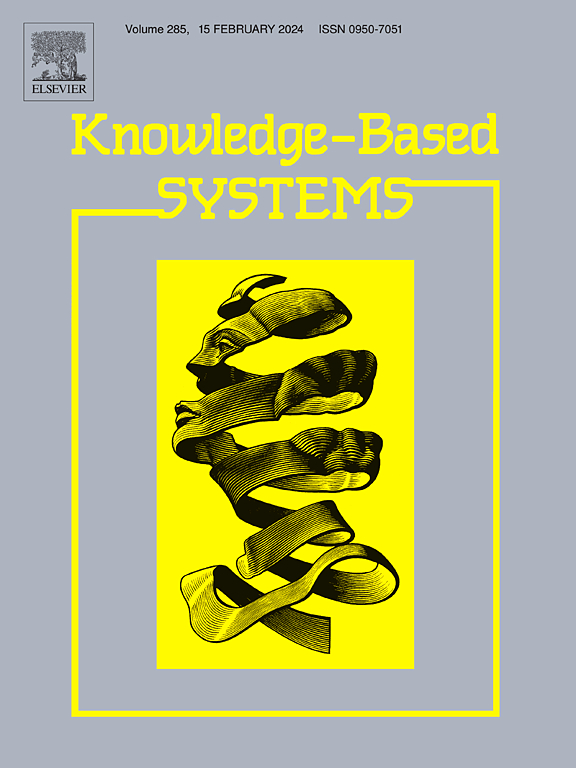QA-TSN: QuickAccurate Tongue Segmentation Net
IF 7.2
1区 计算机科学
Q1 COMPUTER SCIENCE, ARTIFICIAL INTELLIGENCE
引用次数: 0
Abstract
Tongue segmentation is an essential part for computer-aided tongue diagnosis. Since of similar color and texture between tongue body and non-tongue body, such as lips and face, existing methods produce the lack of accuracy and completeness for tongue segmentation results. Moreover, small samples in tongue datasets lead under-fitting on CNN-based methods which always produce poor segmentation. To solve these problems, we designed the quick accurate tongue segmentation net (QA-TSN) to segment tongue body. To alleviate small sample problem, in the proposed method, a tongue-style transfer generation net(T-STGN) was propose to synthesize tongue images. In T-STGN, a novel encoder–decoder structure with two encoder with a global rendering block was used to refine global characteristics of synthetic tongue images. For real-time tongue segmentation, quicker tongue segmentation net (QTSN) was proposed in QA-TSN. In QTSN, we used an encoder–decoder structure with modified partial convolution (MPConv) to expedite the computation for real-time segmentation. To smooth the segments of tongue body, a novel loss function of tongue segmentation loss (TSL) was proposed. In TSL, tongue edge loss (TEL) was used to smooth the boundary of segmentation of tongue body and tongue area loss (TAL) was proposed to improve the fragmentation of segmentation results. Experiments conducted on tongue datasets achieved an IoU of 98.0307 and a Dice score of 99.0738, with a frame rate of 75.35, outperforming all other methods involved in the experiment. These results demonstrate the effectiveness of the proposed QA-TSN.

QA-TSN:快速准确舌苔分割网
舌体分割是计算机辅助舌体诊断的重要组成部分。由于舌体与非舌体(如嘴唇和脸部)的颜色和纹理相似,现有方法对舌头的分割结果缺乏准确性和完整性。此外,由于舌体数据集样本较少,基于 CNN 的方法拟合不足,导致分割效果不佳。为了解决这些问题,我们设计了快速准确舌体分割网(QA-TSN)来分割舌体。为了缓解小样本问题,我们提出了一种舌头样式转移生成网(T-STGN)来合成舌头图像。在 T-STGN 中,一个新颖的编码器-解码器结构包含两个编码器和一个全局渲染块,用于细化合成舌体图像的全局特征。为实现实时舌头分割,QA-TSN 中提出了快速舌头分割网(QTSN)。在 QTSN 中,我们使用了带有修正部分卷积(MPConv)的编码器-解码器结构,以加快实时分割的计算速度。为了平滑舌体的分割,我们提出了一种新的损失函数--舌体分割损失(TSL)。在 TSL 中,舌头边缘损失(TEL)用于平滑舌体分割的边界,舌头区域损失(TAL)用于改善分割结果的破碎性。在舌头数据集上进行的实验取得了 98.0307 的 IoU 和 99.0738 的 Dice 分数,帧速率为 75.35,优于实验中涉及的所有其他方法。这些结果证明了所提出的 QA-TSN 的有效性。
本文章由计算机程序翻译,如有差异,请以英文原文为准。
求助全文
约1分钟内获得全文
求助全文
来源期刊

Knowledge-Based Systems
工程技术-计算机:人工智能
CiteScore
14.80
自引率
12.50%
发文量
1245
审稿时长
7.8 months
期刊介绍:
Knowledge-Based Systems, an international and interdisciplinary journal in artificial intelligence, publishes original, innovative, and creative research results in the field. It focuses on knowledge-based and other artificial intelligence techniques-based systems. The journal aims to support human prediction and decision-making through data science and computation techniques, provide a balanced coverage of theory and practical study, and encourage the development and implementation of knowledge-based intelligence models, methods, systems, and software tools. Applications in business, government, education, engineering, and healthcare are emphasized.
 求助内容:
求助内容: 应助结果提醒方式:
应助结果提醒方式:


